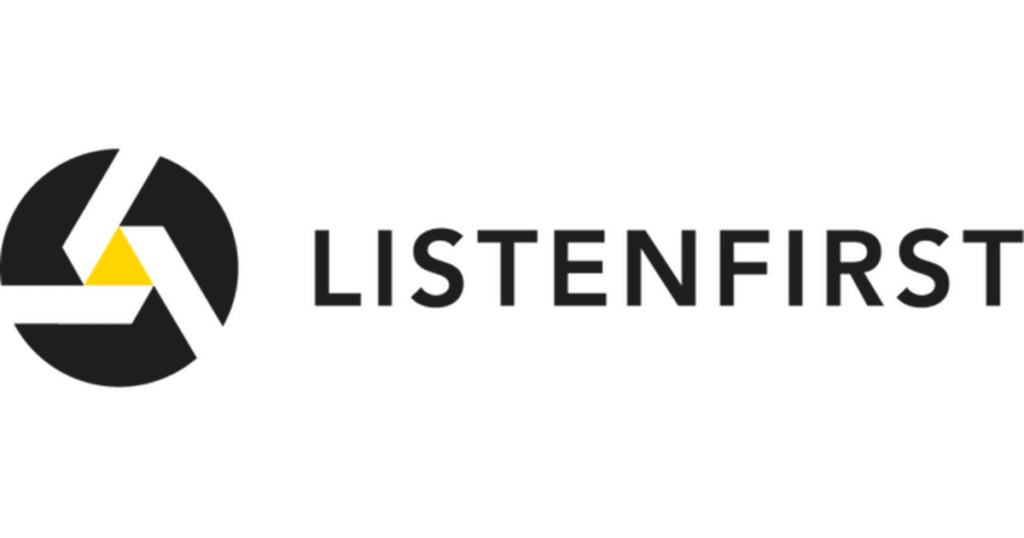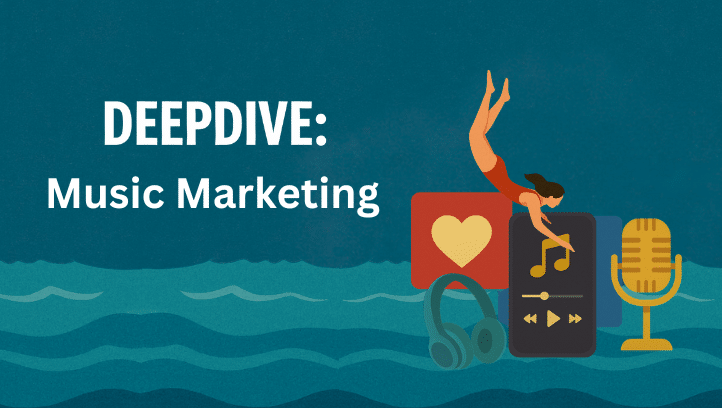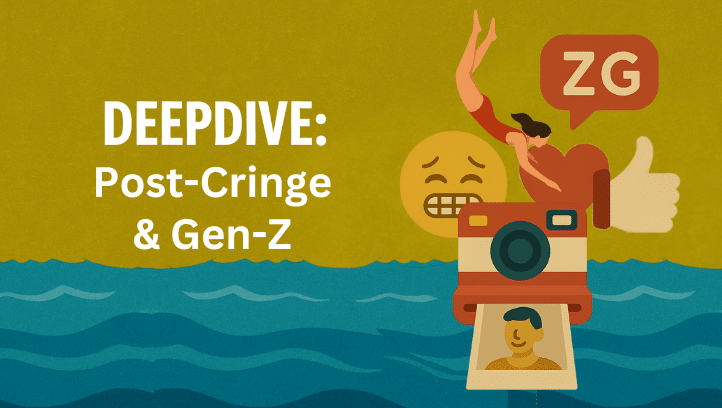In today’s digital marketing landscape, there’s no question that data is crucial to the success of brands around the world. But when it comes to social media, the right data is particularly important to informing high-level business decisions and evaluating performance.
Data, whether it’s demographic information, behavior, or consumer activity, is also a crucial element to understanding your customers. But the way you apply that data, or analytics, that’s the holy grail.
In this guide, ListenFirst takes a deep dive into the definition of social media analytics, its importance, and how to measure analytics to build long-term success for your brand’s social media marketing program.
Article Table of Contents
- What is social media analytics?
- Why are social media analytics important?
- How to measure social media analytics
- Sources of social media analytics & their numbers
- Centralizing social media analytics
- Three types of social media solutions
- Moving your social media strategy forward
What Is Social Media Analytics?
At ListenFirst, we think of social media analytics as the process of collecting and analyzing data and real-time conversations directly from your brand’s social media networks to measure success and better inform your social media marketing strategy.
Vanity metrics, such as likes, saves, shares, follows, retweets, clicks, and impressions, are often the first thing to come to mind when you think of social media analytics. And while these metrics give you a surface-level understanding of brand performance, at its core social media analytics is a more sophisticated and in-depth analysis that gives you a more holistic view of your brand performance. It connects earned, owned, and paid media metrics directly to brand ROI.
Social media monitoring and social media listening are also important tools to consider, yet they tend to be more reactive and limited in scope. Social media listening complements an in-depth social media analysis and together, they can provide a complete picture of a brand’s performance and analytics to drive better strategies and a more meaningful, targeted customer experience.
Why Are Social Media Analytics Important?
Social media analytics can simplify millions of data points to help you better understand your audience. What’s more? Once you have this information, you can leverage it to shape your social media marketing strategy and reap a strong ROI.
Here are a few of the key benefits to social media analytics and how to leverage them:
- Trendspotting: Understand current and upcoming trends in the marketplace, and how your brand can remain relevant;
- Test your audience: Understand your audience’s response to a conversation and leverage it to test a new idea, product, or marketing campaign and get real-time feedback on how to shift your strategy; and,
- Gain a competitive edge: Get a full understanding of customer sentiment toward your brand and competitor brands to identify challenges, and opportunities for new features or services.
Case In Point: Tiffany & Co.
On a 2019 Advertising Week panel with ListenFirst, Tiffany & Co. made the case for the importance of social media analytics when it leveraged Instagram Analytics to gain a better understanding of its audience and how to develop its creative strategy moving forward.
Using ListenFirst to evaluate Instagram posts they determined which backgrounds were performing well, and found that white or light colored backdrops with jewelry in full view were performing above average. Alternatively, posts with bright backdrops with jewelry in partial view were performing below average. This enabled them to create more consistent, cohesive content that better drove engagement.
Social media analytics gives brands a comprehensive understanding of their audiences’ desires, identifying actions that will drive further awareness, interest and ultimately, sales.
How To Measure Social Media Analytics
Only 14% of marketers are able to tie social media efforts to ROI. So if you find it challenging to prove the value of your social media campaigns, you’re not alone. The key to successfully measuring the impact of your social media efforts hinges on leveraging social media analytics.
Three critical steps can ensure you have the right elements in place to measure your social media marketing program effectively.
- Identify metrics that align with your business goals.
- When it comes to setting KPIs that will have an impact, less is more.
- Start with your business goals. How do those translate into social metrics or outcomes?
For example:
- Do you want to grow awareness? Consider metrics related to audience growth.
- Are you set on increasing brand affinity and loyalty? Review engagement rates.
- Is brand love your focus? Look at social sentiment.
Follow a thoughtful process when determining the metrics that are important to your business.
Use social media analytics to set realistic benchmarks.
It’s critical to outline your goals and do industry research prior to determining the most logical KPIs for your brand.
Of course, you want to look at historical trends for your brand as well as for your competitors. But there’s also a lot to gain from reviewing other aspirational brands who’ve accomplished what you are after. Even if the brand is not a player in your industry, their social media tactics might be something your brand can adapt and see success with. Then based on your research of competitors and cross industry top performers, ask what’s an ambitious but reasonable expectation for your brand?
Download our report How to Maximize Social Media Analytics for more details on how to identify the metrics that matter.
Track your KPIs
Reporting is key. Once you have your KPIs set, make sure you schedule check-ins at regular intervals.
Additionally, reporting that allows you to see all of your cross-channel data in one view is essential. You’ll also want to set up reporting that will allow you to see the most important metrics, including your benchmarks and historical trends, at a glance.
Dashboards are a great way to communicate the story the data is telling to your key stakeholders. ListenFirst recently added configurable dashboards to the platform, giving users the opportunity to build a series of dashboards to best match their team’s goals.
Sources of Social Media Analytics & Their Numbers
Today’s brands understand the increasingly indispensable role of social media marketing. To gain a full understanding of your audience for each social media platform, it pays to use an in-depth social media analytics solution. A comprehensive dashboard, like the one shown below, can help you establish a baseline of competitive audience demographics, languages, geography, and brand affinities to craft the most high-impact, tailored social media marketing plan – and easily adapt to your audience and market’s evolving needs.
There are a slew of paid and free tools available to provide insights that can help your brand understand your audience and leverage data to hone your brand strategy. Each platform also offers their own analytics, which provide key trends and performance data about each channel to help brands optimize their social media marketing strategy.
Here’s a high-level look at each analytics platform:
- How to Use Facebook and Instagram Insights – and now the Meta Business Suite
Facebook Insights and Instagram Insights make it easy for brands to gain a deeper understanding of their audience breakdown, post and page performance, as well as age, gender, and geographic location, and more. Recently, Meta Business Suite was introduced to help brands manage Facebook and Instagram in one place. You can now get a full picture view of key trends and performance of these platforms and more easily retrieve data to better inform your social media marketing strategy.
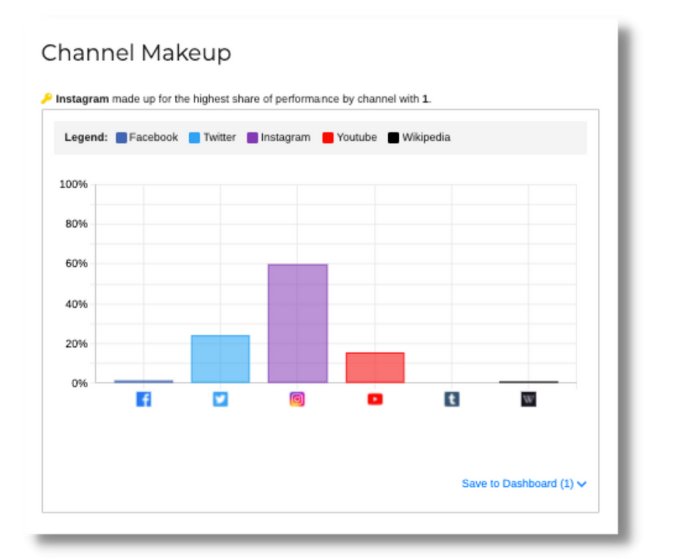
If you want to see all of your metrics in one place, beyond just Facebook and Instagram, a social media analytics solution like ListenFirst will give you that added visibility. ListenFirst includes Facebook and Instagram analytics in all proprietary key cross channel analytics, so you can understand which channels are driving the most earned, owned, and paid engagement, Additionally, using exclusive, authorized data from other ListenFirst customers that’s been anonymized, you can see how your brand’s owned and paid performance on Facebook and Twitter compares to industry benchmarks.
You can find out more about ListenFirst’s approach to Facebook analytics here, while you can learn more about what we offer around Instagram analytics here.
- How to Use YouTube Analytics
YouTube Analytics is easily accessed from your brand’s channel dashboard. The channel overview provides a high-level look at your channel’s performance, with a look back at the last 28 days. Additional general analytics include views, watch times, and subscribers. A real time report option also shows activity of your videos in, you guessed it, real time. Additional reporting is easy to access as well. Metrics like Cost Per Mille (CPM) or cost per a thousand impressions, and Revenue Per Mille (RPM), provide you with an understanding of how advertisers view your content and how much your brand is earning per view.
Where brands might want third party help around YouTube analytics is even greater context. ListenFirst offers YouTube competitive analytics, includes YouTube in cross-channel metrics, YouTube Sentiment Analysis, and provides YouTube Audience Insights which includes geographic location data, broken down by country and U.S. State/Territory.
- How to Use LinkedIn Analytics
LinkedIn Analytics are easy-to-access from the Admin Page View and can help you gauge the performance of your LinkedIn audience over time. While you can access surface analytics, like page followers, visitors, you can also evaluate the quality and topics of content shared with your page followers and visitors through updates (or content, if you’re on the mobile app). Competitor analytics also enables you to compare and contrast metrics such as new followers and new engagements for up to 9 similar brand pages. Because of LinkedIn’s more business-oriented platform, you can also access a more in-depth look at employee advocacy content to assess engagement with current employees – and prospective talent.
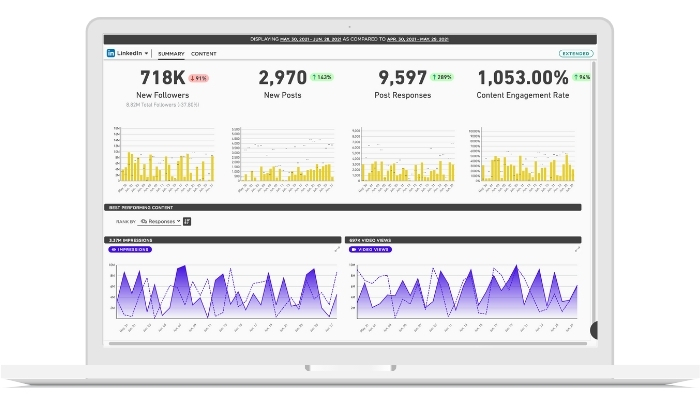
For an apples to apples comparison of how LinkedIn is performing as a channel relative to other social media channels, ListenFirst can provide that additional needed context. Learn more about how ListenFirst can help brands get more out of their LinkedIn analytics here.
- How to Use Pinterest Analytics
With a business account, Pinterest Analytics provides you with robust data. Overall Presence shows a high-level overview of organic, paid, and earned engagement for all of your brand’s pins. Toggle over to Account Insights and you’ll get a deeper look at how users interact with the content they save from your brand’s accounts. You can take a look at your Best Pins to understand what is most viewed, and importantly, Audience Insights brings a deeper understanding of your audience’s behaviors to the forefront.
Through ListenFirst, brands can track authorized insights on owned boards, including Pins, Pin engagements, comments, and new followers.
- How to Use Twitter Analytics
Within Twitter directly, you’re provided with a slew of analytics to better understand how to create more creative, engaging content that will gain a response. Its dashboard provides a simple and succinct view of the core metrics that matter. Your Twitter analytics homepage shows a monthly breakdown of the number of tweets, tweet impressions, profile visits, mentions and followers. As you dig deeper, you’ll find tweet highlights, top mentions and your top followers. You can also view video engagement and track conversions.
One of the biggest advantages of Twitter for marketers is how almost all of the content on the platform is public, making it an incredible resource for social listening. For brands that want to use Twitter to understand their audience beyond how just their owned and paid content performs, there’s a treasure trove of data available through third party analytics solutions. That includes understanding demographics, affinities, real-time conversation tracking, and trending topics and interests that gives brands a much better understanding of what messaging and strategies will connect with their unique audience.
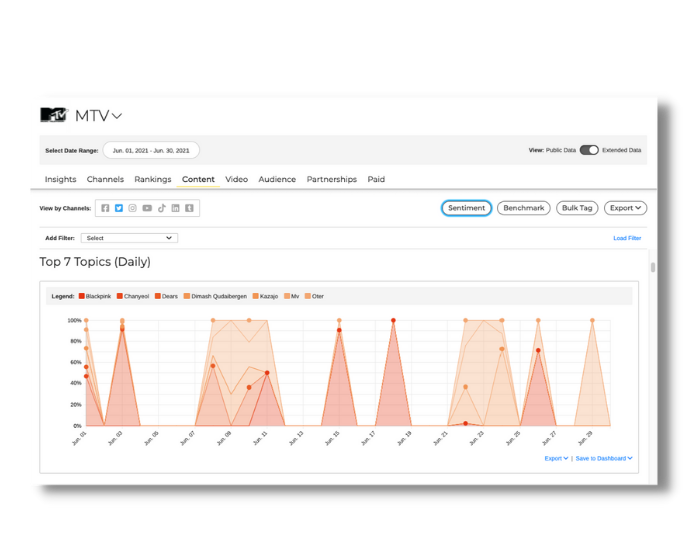
Visit our Twitter Analytics page to learn more about how ListenFirst, a member of the Twitter Official Partner Program, can help better leverage Twitter data to understand your brand’s unique audience.
- How to Use Snapchat Insights
Snapchat Insights are simple and straightforward. They provide the right level of analysis to understand your community and develop content to better engage them. Some of the key metrics you can track include views and impressions, as well as the number of people viewing a post and the length of time a viewer is watching. You can also closely review the demographics, geographic locations, interests, and devices being used within your community, so you can hone your content strategy accordingly.
- How to Use TikTok Analytics
Natively, TikTok organizes its analytics into three main areas: Overview, Content, and Followers. The Overview is where you can view the surface-level metrics like follower growth, video views, likes, comments, and more. The date range can be customized up to 60 days. An Engagement section enables you to review these metrics for overall video performance, specifically.
The Content tab takes you one step deeper by providing more specific metrics for each video post (it must have been posted within the past 7 days). You can take a look at total views, total likes, comments, shares, average watch time, traffic source type, and audience territories, and more.
The Follower section helps you glean insight into your TikTok community, with information like audience geography, most active days/times, and trends in follower growth over a specific period of time.
For brands looking for analytics to benchmark the performance of your TikTok content vs. the TikTok content from competitors, a third party social media analytics solution like ListenFirst is your best bet. ListenFirst, which is not an official TikTok partner and instead has built an integration with the TikTok API, offers a complete view of how entire groups of competitive brands are performing by such metrics engagements, shares, video views, and new followers. You can get a more complete picture of how ListenFirst can help brands understand earned, owned, paid, and competitive performance around TikTok content by reading our TikTok analytics page.
Centralizing Social Media Analytics
With so many social media channels, the key to success in managing social media analytics is to take a holistic view of your brand’s efforts. A centralized social media analytics solution can ensure you view and analyze paid, owned, and earned content, all in one place. It can also help you to understand context, outline key takeaways based on data, and easily share those findings with others on your team for peak efficiency.
Understand context
Context is everything. A centralized social media analytics solution should leverage social media monitoring and social media listening to provide you with insights around a topic, brand, or product. This will also allow you to measure cross-platform trends and shifts in habits over time to find out what works, what doesn’t, and why. A sentiment analysis is an important feature to help you understand how your audience feels towards a topic or theme. These insights can be vital to better tailor content, plan campaign strategies, and allocate spend.
Uncover key takeaways
As we mentioned, a centralized social media analytics solution can help you quickly uncover the key takeaways as if you were your own social media analyst. A customization feature is key so that you can develop your own set of analytics, goals, and benchmarks, then easily share them with your team.
Three Types Of Social Media Solutions
There are three core types of social media platforms that can help your team in your quest to determine which solutions your brand needs.
Publishing
A social media publishing platform like HootSuite will enable you to create, schedule, publish, and track social media activities across all of your platforms. Scheduling can build an efficient and effective workflow for you and your team, and make it easier to plan and execute your social media marketing strategy.
Listening / Monitoring
Social media listening and social media monitoring tools are becoming more prevalent in the digital marketing space. And while these terms are often used interchangeably, there is a difference. Social media monitoring typically tracks the mentions of your brand or campaign so that your team can take action appropriately, while social media listening looks at the conversations around your brand or campaign, and allows you to leverage those conversations to better inform your social media marketing strategy as a whole.
Learn more about how ListenFirst can enable you to better tailor your approach, and the case studies that show how it’s done.
Analytics
A social media analytics platform will help you make sense of your brand’s social media efforts. While many free and paid platforms exist, it is important to take into account what you are looking for. Do you want to know how many mentions your brand received on social media last week? A free platform like Critical Mention may be able to do that. If you’re looking for more in-depth and comprehensive analysis that will help inform campaigns, there are tools like ListenFirst that can help provide a micro and macro view of your efforts.
Moving Your Social Media Strategy Forward
At a time where content matters, it is crucial to put a framework in place to understand your audience, benchmark your progress, and inform your business strategy. The right social media analytics will help you do just that.
Our premier social media analytics solution can help you unlock social insights, optimize social media marketing, and maximize social media ROI. Learn more about how ListenFirst customers have put social media analytics and social media listening to work for them.
